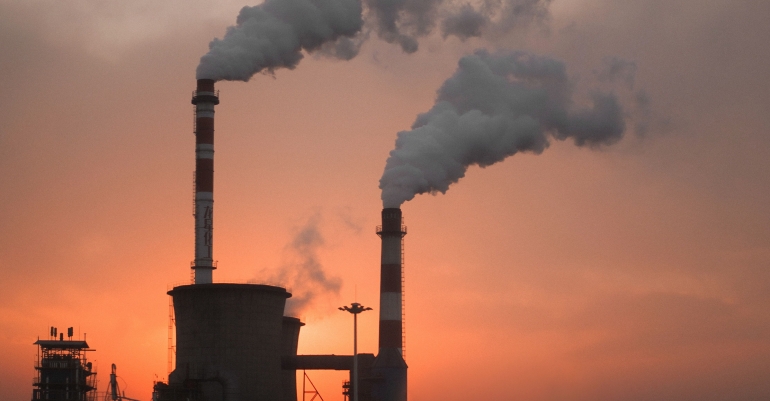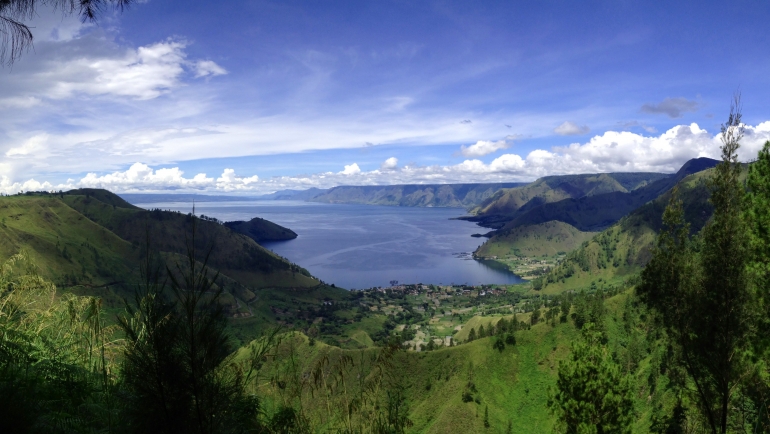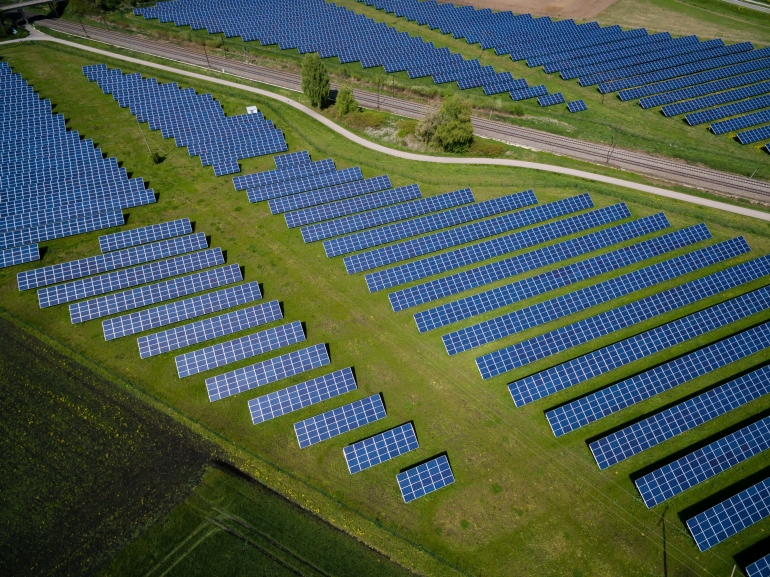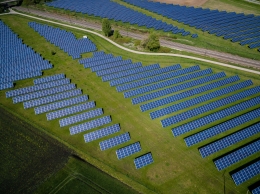Discovering the effective use of renewable energy is important in developing a sustainable economy and environment in Indonesia.
The world we know and love is dying, or should I say it’s already dead. This might be a cliché but it’s the truth. This is caused primarily by pollution. This pollution causes the drastic increase of global temperature, melting of polar ice caps and destruction of habitats, environments, and biomes. One of the main contributors to pollution is the consumption and production of energy.
Energy is needed by everyone in the world. The production and distribution of energy is also one of the biggest contributors to the global economy. All production and distribution of goods require electricity. Without electricity, no company would function properly. Let’s look at Apple, the company not the fruit. As reported by Apple, as of September 2019, Apple has a total revenue of around $64 billion. To achieve this, Statista (2019) mentioned that Apple consumes around 2.18 billion kilowatts of electricity.
Most energy that is produced and distributed comes in the form of electricity. Electricity can be generated in many ways, the most common using fossil fuels or petroleum. According to the U.S. Energy Information Administration (2018) in 2018 65% of total electricity generation in the United States involves the burning of fossil fuels, biomass, and industrial waste. The burning of said materials releases harmful chemicals such as Carbon dioxide, Carbon monoxide, and Sulfur dioxide. All of these chemicals are not only released by one country. There are hundreds of countries that still rely on nonrenewable energy sources for electricity. Among the countries that rely on the burning of fossil fuels for electricity generation in Indonesia.
As stated by Nurmayanti (2019), one of the biggest contributors to the production of electricity in Indonesia is the Paiton Power Plant. This power plant uses fossil fuels to generate electricity. This power plant has a total capacity of 4600 Mega Watts. Furthermore, according to Kompas (2009), Indonesia also has a program called “Program PLTU 10.000 MW.” This program involves the construction of 35 more fossil fuel-based power plants all over Indonesia. These power plants are planned to have a capacity of 10000 Mega Watts (MW). The construction of these power plants further emphasizes the dependence of our society on fossil fuel-based electricity generation. This dependence on fossil fuels is terrible and goes against the goal of creating a sustainable economy and environment.
However, there are other ways to generate electricity. Such as using hydropower and wind power, instead of relying on the burning of fossil fuels. These alternatives are key to a better and more sustainable environment, economy, and society.
Change is Needed

An observation by NASA (2015) reported that the average global temperature on Earth has increased by about 0.8° Celsius since 1880, with a rate of roughly 0.15-0.2º Celsius. This might look or sound small, but the slightest change in global temperature leads to disastrous effects. These effects include forest fires, droughts, unexpected weather patterns, and worst of all, climate change.
Climate change affects the whole world, not only humans but also the environment. Climate change in the Arctic, caused by global warming, has caused what scientists call “The Big Thaw.” The melting of polar ice caps causes the rising of sea levels, which can flood/drown low areas, areas below sea level and areas near the sea. Furthermore, climate change can also destroy a lot of habitats due to forest fires, droughts, and rising sea levels. Additionally, climate change can affect permafrost. Why is permafrost important? According to O. Roger Anderson (2018) a biologist at the Earth Institute’s Lamont-Doherty Earth Observatory, “the ‘active layer’ of soil on top of the permafrost, which may be two to 13 feet deep, thaws each summer and can sustain plant life. This layer releases carbon from the roots of plants that respire, releasing CO2, and form microbes in the soil.” The thawing of permafrost would release Carbon dioxide, which would increase global temperature.
Limited Supply
Not only pollution, but another reason for the necessity of a change in energy supply is its limited quantity.
Like everything in the world that is nonrenewable and has a limited quantity, fossil fuels and petroleum are bound to deplete over time. As we enter the age of technology, electricity has been an essential part of our lives. Without electricity, almost everything would turn to chaos. This dependence on electricity was seen during the massive Californian power outage on October 9 and 10, 2019. As written and reported by Jill Cowan (2019), the massive power outage caused chaos in labs all around the state, and universities such as U.C. Berkeley and Humboldt State University were forced to close campus and cancel classes.
This chaos shows our significant dependence on electricity. If one day the earth loses its entire fossil fuel and petroleum supply, our society would be doomed. However, this problem wouldn’t be as serious if we were to change to depending on renewable energy.
In an interview with Mr. Budi Basuki, former President Director and current COO of Power & Mining for Medco Energi, he stated “Indonesia has already imported around half of the supply of diesel fuel. Out of around 1.6 million, 600 thousand of the diesel fuel is imported.” If the government of Indonesia is already importing diesel fuel, this means that Indonesia is already experiencing a shortage of fossil fuels. This is more proof that renewable energy needs to be the main source of electricity.
In the interview, Mr. Basuki further stated that the government of Indonesia is currently having problems with the state budget (APBN). As stated above, Indonesia imported around half of the supply of diesel fuel. He stated that Indonesia used around 28 billion IDR for importing petroleum. This puts the government of Indonesia in a pinch because they are out of money. Instead of importing materials that are needed for projects such as infrastructure, agriculture, and technology for renewable energy. Furthermore, in the interview, Mr. Basuki also stated that the distribution of petroleum is expensive. In Indonesia, it is very costly to distribute to Papua. The island of Papua is one of the least developed areas in Indonesia. Because of the price, it’s quite hard to develop the area. Henceforth, the need to change to renewable energy is greater than ever.
Obstacles for Change
Changing the main source of energy takes a long time. Unlike Indonesia, Mr. Budi Basuki stated that green energy, such as solar power, in some developed countries is much cheaper than petroleum. He also mentioned that previously “around 30% of Indonesia’s GDP came from petroleum. However, the number has decreased as the years passed.” In an interview with Muhamad Reza, PhD, power system expert and electrical engineering lecturer at Telkom University, stated that “it may take five to ten years to adapt to the change from fossil fuels to renewable energy.” This statement is further supported by Mr. Budi Basuki in his interview. He said that, since Indonesia is still a developing country, it would still be hard to develop the technology needed. Why? Because the process and construction of said technology is expensive and time-consuming. Henceforth, Indonesia would still need to use cheap and easy petroleum or fossil fuels to develop the country.
IESR (2019) reported that “RUPTL (Rencana Usaha Penyediaan Tenaga Listrik) low-cap reference case comes at the lowest overall cost of US$135.4 billion over the ten-year period. Medium RE (Renewable Energy) scenario is 4% higher, and High RE 7% higher; in the Energy Transition scenario, with lower WACC (Weighted average cost of capital) at 8% and a steeper learning curve for solar and wind, system cost goes down to $134.2 billion, lower than in the RUPTL reference case.” This is the predicted total costs of the transitions through 4 different scenarios. This prediction has been run through many scenarios. As stated above, a transition from petroleum to renewable energy sources would not be cheap and it would take more than or around ten years.
Economical Benefits
There are millions of companies, factories, and even small businesses that rely heavily on electricity. In this new age, almost everything is powered by electricity. With that, the economy of a country is also heavily dependent on electricity and its production. Let’s take a look at Indonesia.
Petroleum is one of the biggest contributors to GDP. It used to contribute to around 30% of Indonesia’s GDP. It currently represents around 25% of GDP in Saudi Arabia and Venezuela, and around 15% in Nigeria and Russia. However, IRENA (2016) stated that the use of renewable energy can help increase global GDP, welfare, and job opportunities.
According to a study by the International Renewable Energy Agency or IRENA (2016), “the findings show that doubling the share of renewables in the final global energy mix increases global GDP in 2030 between 0.6% and 1.1% compared to business as usual. The increase amounts to between USD 706 billion and USD 1.3 trillion.” Furthermore, additional investment in renewable energy leads to higher levels of output and GDP. A lot of countries have been noted to have a large positive impact on GDP due to higher investment, including Ukraine (3.7%), Japan (3.6%), India (2.4%), South Africa (2.2%), the US (1.8%) and Australia (1.7%). Additionally, sectors that deal with renewable energy such as renewable equipment manufacturers and their supply chains would also receive an increase in global production.
As for welfare and job opportunities, IRENA (2016) also reported that doubling the shares of renewable energy also increases welfare around +2.7 to +3.7%. Through the use of renewable energy supply, energy access would also be improved. Energy access is vital for welfare. Currently, according to Ritchie and Roser (2019), 13% of the population does not have access to electricity. Furthermore, the World Economic Forum (2012) reported that the energy sector has played the dual role of fuelling economy-wide development and supported a large number of jobs globally. The change from petroleum to renewable energy would require a lot of manpower. Therefore, this would help countries with high unemployment rates and rely upon labor-intensive processes.
Renewable Energy in Indonesia

According to the Climate Change Performance Index or CCPI (2019), Indonesia has an overall ranking of “low” and a score of 28.18 for the category of “Renewable Energy.” To improve on that Indonesia should improve its use of renewable energy. Indonesia has already tried to rely more on renewable energy. As reported by Indonesia Power, two of their five Power Generation Units (PGU) in Indonesia, are hydroelectric power plants. These two power plants combine to have a total capacity of 1107 MW.
Indonesia is an agricultural archipelago and a tropical country. It is best to maximize the use of solar power, hydropower, geothermal energy, wind power, and biomass. In interviews with Mr. Basuki, Dr. Mardiasmo, and Dr. Reza, they all stated that these sources of energy are all the best suited for Indonesia. According to IESR (2019), some of the renewable energy sources are only effective in specific areas. Solar power is effective for use in the Nusa Tenggara islands because these islands receive the most sunlight than any other area in Indonesia. Wind power is effective for windy areas such as West Java, South Sulawesi, and the Maluku Islands. Geothermal energy is perfect for areas with high volcanic or magma activity. Since Indonesia is at the ring of fire, there are many areas with high volcanic activity such as Dieng and Sinabung. Hydropower can be used almost everywhere. Since Indonesia is a maritime country and a country with significant sources of water. Indonesia could take advantage of ocean waves. Ocean waves are one of the greatest sources since Indonesia is situated between two oceans which combined produce many waves. As for biomass, since Indonesia is an agricultural country and a “traditional” country, it has a lot of livestock. Livestock such as cows can be found all over Indonesia.
Furthermore, In the same interview with Dr. Mardiasmo, he said that countries like Indonesia would benefit significantly from renewable energy production that requires labor-intensive processes. Since Indonesia is the fourth most populated country, Indonesia needs many job opportunities to fulfil the needs of society.
Indonesia has great potential for renewable energy. Indonesia has numerous resources that are valuable to the development of renewable energy. The change from petroleum/fossil fuels may take a long time and affect some of Indonesia’s economy. However, if the goal of a country is to create a sustainable and developed society, and has a high quality of life, the change to renewable energy is vital to the goal. As John Maxwell once said, “Change is inevitable, growth is optional.”
Follow Instagram @kompasianacom juga Tiktok @kompasiana biar nggak ketinggalan event seru komunitas dan tips dapat cuan dari Kompasiana. Baca juga cerita inspiratif langsung dari smartphone kamu dengan bergabung di WhatsApp Channel Kompasiana di SINI









